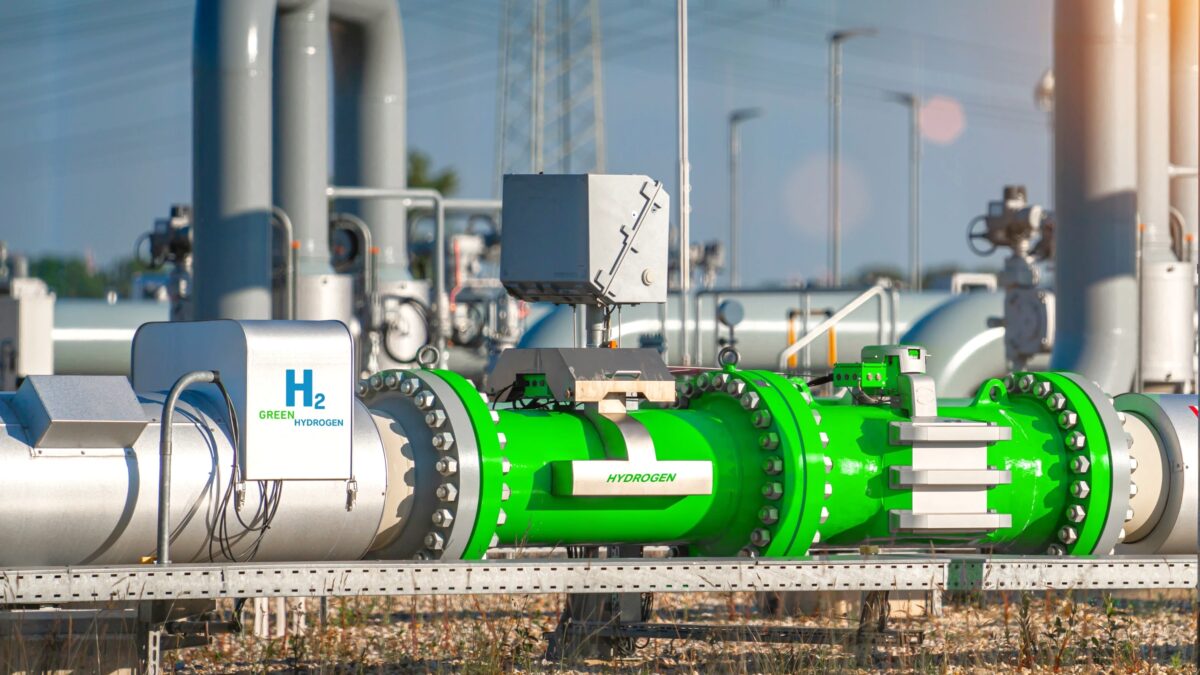India Makes Strides in Green Hydrogen and Rooftop Solar Adoption
India advances clean energy with a solar-powered hydrogen breakthrough and new rooftop solar push in urban centers.
India unveiled two major initiatives on Friday aimed at accelerating its clean energy transition — one in advanced green hydrogen technology and another in scaling up rooftop solar adoption across urban centers.
Scientists at the Centre for Nano and Soft Matter Sciences, an autonomous institute under the Department of Science and Technology, have developed a next-generation device that produces green hydrogen by splitting water molecules using only solar energy and earth-abundant materials.
The new silicon-based photoanode, engineered using an innovative n-i-p heterojunction structure, leverages a tri-layer of titanium dioxide, intrinsic silicon and nickel oxide.
The device is fabricated via magnetron sputtering, allowing for enhanced light absorption and charge transport.
The device achieved a surface photovoltage of 600 millivolts and a low onset potential of approximately 0.11 Volts versus the Reversible Hydrogen Electrode, metrics that indicate high performance in solar-to-hydrogen conversion.
It demonstrated operational stability for over 10 hours under alkaline conditions, with a performance drop of just 4 percent — a rare achievement in silicon-based photoelectrochemical systems.
“This is a significant advancement toward large-scale, affordable solar hydrogen production,” said lead researcher Dr. Ashutosh K. Singh. “Our approach combines efficiency, durability, and scalability, essential for transitioning to green hydrogen energy systems.”
The findings were published in the Journal of Materials Chemistry A and may have wide-reaching implications for decarbonizing sectors such as transport, industry, and energy storage.
City Accelerator for Rooftop Solar Rollout
In New Delhi, the Ministry of New and Renewable Energy launched the City Accelerator Program, designed to fast-track the adoption of rooftop solar in Indian cities.
The initiative, supported by the Shakti Sustainable Energy Foundation, was announced during the National Conference on Skill Development for Renewable Energy Workforce.
The program is part of the PM Surya Ghar: Muft Bijli Yojana, billed as the world’s largest domestic rooftop solar scheme.
It aims to solarize 10 million homes and help India achieve its goal of 500 gigawatts of renewable energy capacity by 2030.
The initial phase will cover 30 cities across 10 states, providing technical assistance to urban local bodies and electricity distribution companies, enhancing institutional capacity and offering guidance on policy frameworks.
“This program will address local barriers to rooftop solar uptake and help design economic models that demonstrate the long-term benefits for DISCOMs and households,” said MNRE Secretary Santosh Kumar Sarangi in a statement.
Dedicated implementation teams and a central cell at MNRE will oversee on-ground activities.
The accelerator also seeks to promote collaboration among state nodal agencies, city administrators, and power utilities. Outputs will include toolkits, regulatory templates, awareness campaigns, and replicable business models to make India’s urban areas solar-ready.
Together, the twin developments represent India’s growing push to leverage innovation and policy to meet its ambitious climate goals. While the CeNS breakthrough strengthens the technological edge of solar-to-hydrogen pathways, the City Accelerator Program lays critical groundwork for widespread renewable energy adoption at the community level.
Also Read:
MNRE Approves 50 Solar Parks with 37.5 GW Capacity, Expands Wind Energy Plans
Nirmal Menon
Related posts

Subscribe
Error: Contact form not found.


